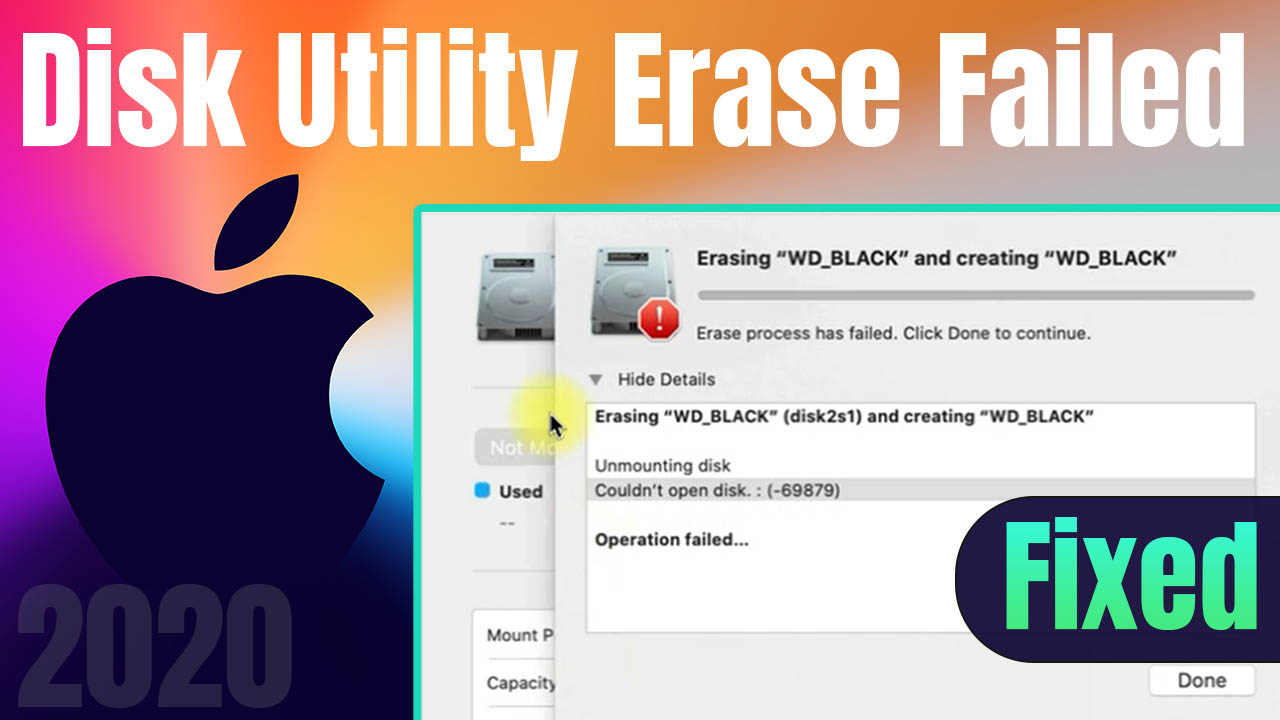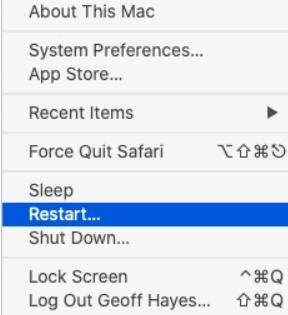

But if I erase the drive using Mac OS Extended (journaled) for the format the process works fine. Step 2: A boot menu will appear, here, select to choose "Disk Utility". Select the parent folder for the drive you want to reformat or erase, then click the Erase button again. Select Main Drive (not volume, that's what's causing the problem) Now click "Erase", enter name, select OS Extended (Journaled), and Scheme is "GUID Partition Map". Next, access Disk Utility from the boot menu. If Disk Utility failed to repair the disk, and the Macintosh HD not showing in Disk Utility issue remains, then you can try another macOS utility - Terminal to fix the hard drive not mounting issue. Now, select the external device from the sidebar and click on the "Erase" button. What Disk Utility looks like in Lion through Yosemite. As it turns out, a lot of affected users that were also dealing with this issue on macOS have managed to fix the issue by using Disk Utility to create a new partition map by forcing the utility. Can't tell from my own experience if the problem is related to the T2 chip or to Catalina, but had to use an older Mojave based Mac to succeed creating the bootable USB stick. Eject External Hard Drive with Disk Management. I was getting things like: "could not modify partition map" and "couldn't unmount disk." Whatever I do, I keep on ending up with the message 'Disc erase failed couldn't unmount disc' I am currently in grey screen with OSX Utilities and internet access only. Step 2: Type Disk Utility in the search field. Recovery mode was OK but couldn't erase the boot volume nor mount it via Disk Utility (I just got "Unable to delete the core storage logical volume. Nothing would make it boot normally again. Couldn't repair, said to reformat, but couldn't erase anything either. Open Spotlight Search by pressing the Command key + Space bar. You may also be able to drag it to the trash from this window.More Less. If so you should be able to select it and choose "Get Info" to find the pathname. A window wil open with all of your drives listed hopefully the phantom drive will be there. In the box that appears type /volumes then choose Goģ. From the finder Go Menu choose Go To FolderĢ. Try the following and see if it gives you a better clue about the location of the phantom drive.ġ. Thanks for the tips folks! I'm expecting someone will point out something very obvious but so far it eludes me. It "has" to be something somewhere on my main hard drive, just cannot for the life of me figure out what! When I copy or delete files to/off the phantom, the disk utilization on the primary drive changes so it's some kind of volume on the HD.įurther to hughvane, I ran Onyx (after upgrading to v 2.0.6 for OS 10.5.8) and repaired permission. It behaves exactly like an external drive or USB stick would, there just is no physical medium involved. If it is not mounted, then it doesn't show up. This is of course with the phantom mounted. When I "Show Originals" it simply shows up as a mounted drive. When I do this to go to /volumes, I see aliases for my two 'real' drives and the phantom. Lastly, please post your Mac and MacOS specs in your profile. I have not done a permissions repair yet, and will take that on next.
Mac era usb stick could not unmount disk software#
Repair permissions, preferably with OnyX Titanium Software for your OS version. I hadn't used this Finder > Prefs option before.Ĥ.

When I re-checked this box, the phantom shows up in the sidebar once again. When I checked the Finder > Prefs, the Hard Disk selection showed a partial selection (line in the check box instead of a check mark). Didn't do much except that of course the phantom didn't show up on the sidebar list any more. OK, I learned something new today! I had right-clicked on the phantom in the sidebar and selected the "Remove from Sidebar" option. Reboot your computer, return to Finder > Sidebar, and re-check the Removable Media option. If not found with DU, go to Finder > Prefs > Sidebar to see if Removable Media is checked. I can simply mount it again, and there it is on the desktop!ģ. When I unmount it, it goes grey as being "unmounted".

If found, select it and eject or unmount. If I eject or unmount the phantom, the file of course disappears from the 'found files' list.Ģ. When the phantom is mounted, the file shows up at the root of the phantom drive, just as though it were a 'real' hard drive. Doing so may locate the device, or its alias.

Once you've copied a file to this ghost device, use Cmd-F (Finder) to look for that file. (Thanks for the tip on filling in my Mac specs. Thanks! My comments after each of your tips:


 0 kommentar(er)
0 kommentar(er)
